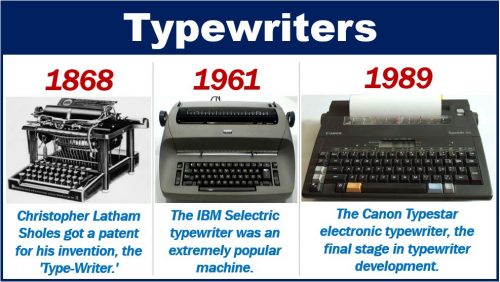The Internet has changed how we work, play, study, and watch movies and shows. It has also changed how people write.
The evolution of the English language, for example, has accelerated since the advent of the Internet. How people write today tends to be more expressive and less formal.
Thanks to specific software like Grammarly, we no longer need to be good spellers and know all the rules of punctuation. Our computers, tablets, and smartphones hold us by the hand and correct our mistakes as we write.
People write using keyboards today
Most people write using a computer or smartphone keyboard, rather than our parents or grandparents who used pens and pencils. Before our grandparents, there were quills and many different types of styluses.
We can now make corrections without smudging paper or using Tipp-Ex (correction fluid).
When people write essays and assignments today, they can gather and analyze all the source material they need online. They can also access the information almost instantly.

Has English changed that much?
Should we be concerned that people today use abbreviations, acronyms, and shorter sentences? When we email or text each other, we use dozens of different abbreviations and acronyms. BRB means ‘be right back,’ other examples include EOM (end of message), FYI (for your information), LOL (laughing out loud), NRN (no reply necessary). These terms are did not exist twenty or thirty years ago.
Since the advent of the Internet, is the way people write really deteriorating?
According to David Crystal, who wrote Internet Linguistics:
“The vast majority of English is exactly the same today as it was 20 years ago. Ninety percent or so of the language you use in a text is standard English, or at least your local dialect.”
When grandparents communicate with their grandchildren by email, nobody needs a translator, because they use the same language.

People write using more words today
Some people say that the Internet has made us write like incoherent children. They claim that our vocabulary is much more limited than it was forty or fifty years ago.
Linguists insist that this is a myth. People write and read much more today than they used to. Thanks to new technology, thousands of new words have emerged.
We all know what a blog is. In the 1990s the term ‘weblog‘ emerged, which we then shortened to ‘blog.’ If a time machine took us back thirty or forty years, nobody would know what ‘blog’ meant.
How about these words: to Google something, mashup, bromance, cyberstalking, sexting, social media, e-commerce, smartphone, apps, and Wi-Fi. We also have cryptocurrency, digital footprint, selfie, URL, HTML, #Hashtag, and vlog (video blog).
The English that people write with today is much more expressive and richer than it was half-a-century ago.

Technology has changed so many aspects of how people write
Today, we can disseminate information to people across the whole world within seconds. Writers 100 years ago did not have as much information at their fingertips as their modern counterparts.
In the past, writers relied on their own creativity to write great works. Since they had less information to work with, they were able to organize their ideas and thoughts systematically.
When people write today, they can easily borrow ideas from others. It is so easy and tempting to copy and paste from other web pages using a computer, organize them, and then present them as original pieces.
Today, organizing information systematically is extremely difficult because there is so much of it.

Artificial intelligence
Did you know that there is artificial intelligence today that writes articles? Artificial intelligence or AI refers to software technologies that can make robots or computers think like humans. It can also make them behave like humans.
The Washington Post has an artificial intelligence technology – Heliograf – that has written hundreds of articles.

Speech recognition software
Today, it is possible for people to write without even using their hands. Speech recognition or voice recognition software is software that allows devices such as smartphones, tablets, and computers to write what you say.
In other words, you dictate and the computer writes it down. You don’t have to touch your mouse, keyboard, or press any buttons.
With most automatic speech recognition (ASR) programs, the user needs to ‘train’ it first to recognize his or her voice.

